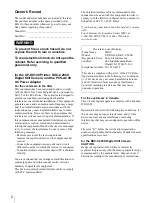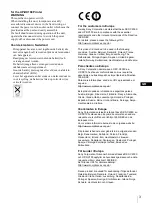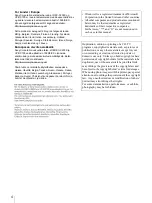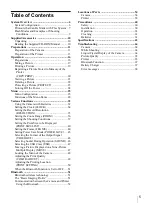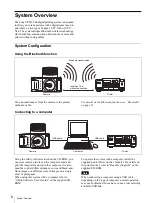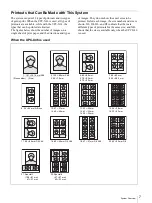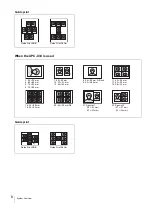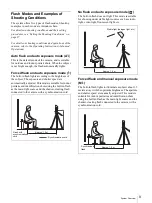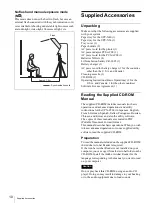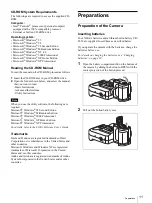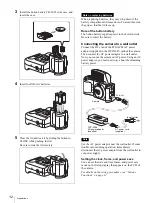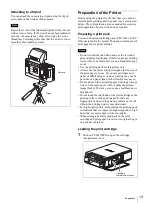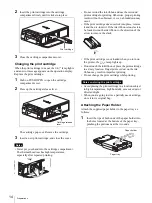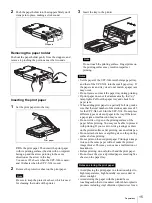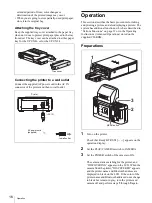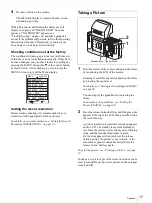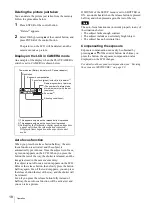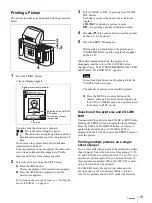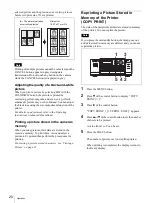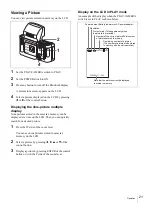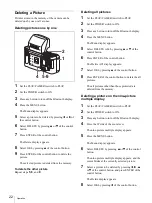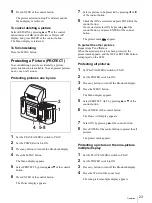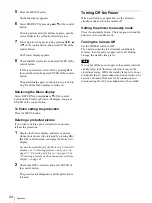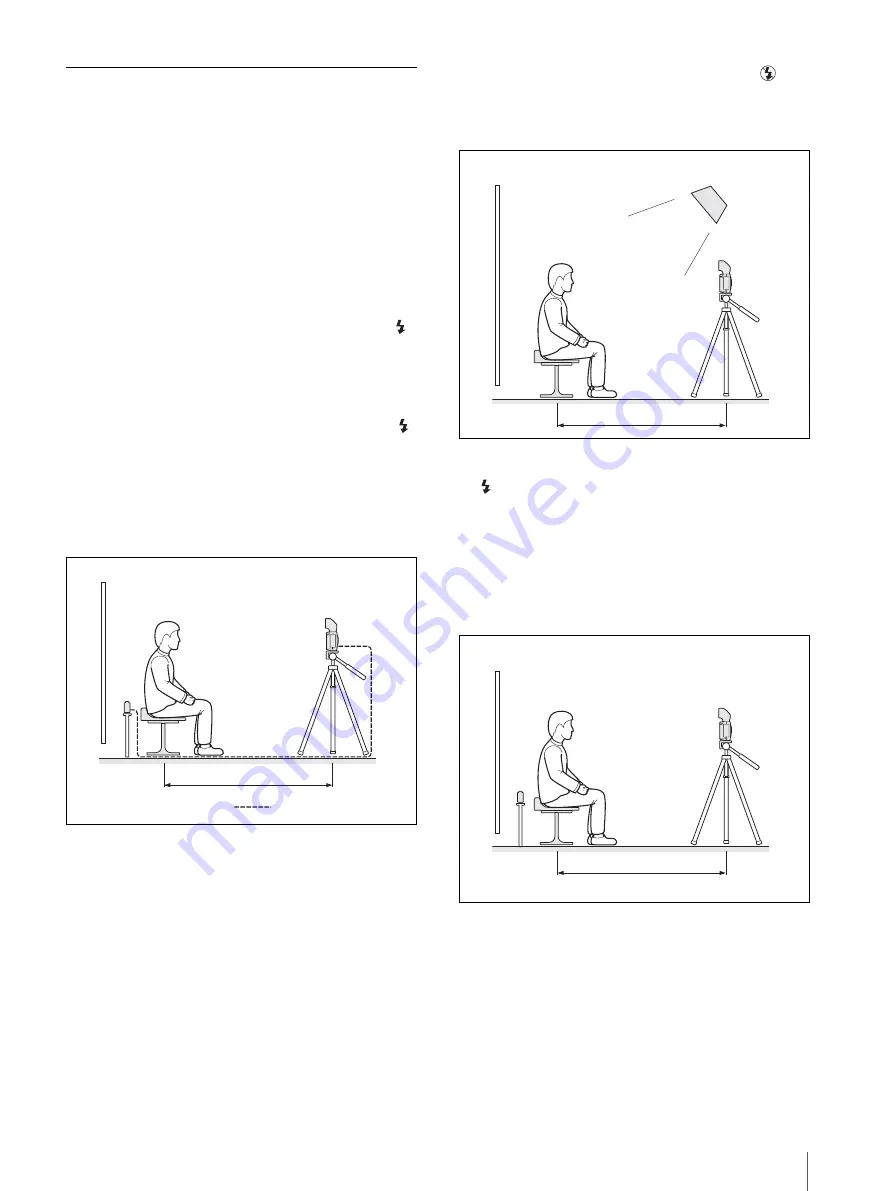
System Overview
9
Flash Modes and Examples of
Shooting Conditions
The system offers five types of flash modes. Shooting
examples in each mode are introduces here.
For details on shooting conditions and their setting
procedures, see “Setting the Shooting Conditions” on
page 37.
For details on shooting conditions and operations of the
camera, refer to the Operating Instructions (Advanced
Operations).
Auto flash and auto exposure mode (A )
This is the default mode of the camera, and is suitable
for outdoor and indoor portrait shots. When the subject
is not bright enough, the flash automatically lights.
Forced flash and auto exposure mode ( )
The built-in flash lights according to the brightness of
the subject. The exposure and shutter speed are
automatically adjusted. This mode is suitable for indoor
portraits and identification shots using the built-in flash
as the main light source and the shadow-clearing flash
connected to the camera with a synchronization cord.
No flash and auto exposure mode (
)
The built-in flash does not light. This mode is suitable
for shooting under stable light sources such as studio
light, video light, fluorescent light, etc.
Forced flash and manual exposure mode
(M )
The built-in flash lights to illuminate a subject about 1.5
meters away with the optimum brightness. The aperture
and shutter speed are manually adjusted. This mode is
suitable for indoor portraits and identification shots
using the built-in flash as the main light source and the
shadow-clearing flash connected to the camera with a
synchronization cord.
: Synchronization cord
Flash with
synchronization
cord
Approx. 1.5 m
Studio light (halogen light, etc.)
Approx. 1.5 m
Synchronized
flash
Approx. 1.5 m
Summary of Contents for UPX-C200
Page 207: ......
Page 208: ...Sony Corporation Printed in Japan ...


